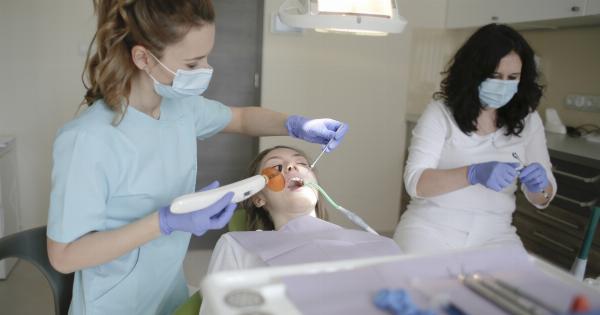World Cancer Day is an international event marked on 4th February each year to raise awareness about cancer and encourage its prevention, detection, and treatment.
It provides an opportunity to educate people about various types of cancer and their risk factors, symptoms, and treatment options. Cancer is one of the deadliest diseases that affect millions of people worldwide and cause a significant number of deaths every year. Therefore, it is essential to know about its different types to stay informed and prepared for any medical condition.
In this article, we will discuss some of the deadliest types of cancer and ways to educate ourselves about them.
Lung Cancer
Lung cancer is the leading cause of cancer-related deaths worldwide, responsible for around 1.8 million deaths every year. It occurs when abnormal cells grow and multiply uncontrollably in one or both lungs, causing a tumor that impairs lung function.
The major risk factor for lung cancer is tobacco smoke, including cigarettes, cigars, pipes, and secondhand smoke. Other factors that increase the risk include exposure to radon gas, air pollution, asbestos, and a family history of lung cancer.
The symptoms of lung cancer include persistent cough, chest pain, shortness of breath, wheezing, hoarseness, weight loss, and fatigue. If you experience any of these symptoms, you should consult your doctor and undergo a screening test, such as a chest x-ray or CT scan.
The treatment options for lung cancer vary depending on the type, stage, and severity of the disease, but they may include surgery, chemotherapy, radiation therapy, targeted therapy, or immunotherapy.
Breast Cancer
Breast cancer is the most common cancer among women, affecting approximately 2.3 million women every year and causing around 685,000 deaths annually.
It develops when abnormal cells in the breast tissue grow and multiply, forming a lump or a mass that can be detected through self-examination or mammography. The risk factors for breast cancer include age, gender, family history, genetics, hormonal factors, lifestyle factors, and environmental factors.
Some of the symptoms of breast cancer include a lump or thickening in the breast or underarm area, changes in the size or shape of the breast, nipple discharge or inversion, redness or scaling of the nipple or breast skin, and breast pain or tenderness. If you notice any of these symptoms, you should consult your doctor and undergo a diagnostic test, such as a mammogram, ultrasound, or biopsy.
The treatment options for breast cancer depend on the stage, size, and location of the tumor, but they may include surgery, radiation therapy, chemotherapy, hormonal therapy, or targeted therapy.
Colon and Rectal Cancer
Colon and rectal cancer, also known as colorectal cancer, affect the large intestine or the rectum, forming malignant tumors that may spread to other organs if left untreated.
It is the third most common cancer in men and women and causes around 900,000 deaths every year. The risk factors for colorectal cancer include age, family history, genetics, lifestyle factors, inflammatory bowel disease, and certain genetic syndromes.
Some of the symptoms of colon and rectal cancer include changes in bowel habits, blood in the stool, abdominal pain or cramps, weight loss, and fatigue. If you experience any of these symptoms, you should consult your doctor and undergo a screening test, such as a colonoscopy, sigmoidoscopy, or fecal occult blood test.
The treatment options for colorectal cancer depend on the stage and location of the tumor, but they may include surgery, radiation therapy, chemotherapy, or targeted therapy.
Pancreatic Cancer
Pancreatic cancer is a type of cancer that affects the pancreas, a gland in the abdomen that produces enzymes and hormones to regulate blood sugar levels, digestion, and metabolism.
It is one of the deadliest types of cancer, accounting for around 460,000 deaths every year, and is often diagnosed at an advanced stage, making it difficult to treat. The risk factors for pancreatic cancer include age, smoking, obesity, family history, genetics, chronic pancreatitis, and diabetes.
Some of the symptoms of pancreatic cancer include abdominal pain or discomfort, weight loss, jaundice (yellowing of the skin and eyes), nausea or vomiting, diarrhea or constipation, and fatigue. If you experience any of these symptoms, you should consult your doctor and undergo a diagnostic test, such as a CT scan, MRI, or endoscopy.
The treatment options for pancreatic cancer depend on the stage and location of the tumor, but they may include surgery, chemotherapy, radiation therapy, or targeted therapy.
Liver Cancer
Liver cancer is a type of cancer that affects the liver, the largest internal organ that performs various functions, such as filtering toxins, producing bile, and storing energy.
It is the sixth most common cancer in the world and results in around 830,000 deaths every year. The risk factors for liver cancer include chronic viral hepatitis (B or C), alcohol abuse, obesity, tobacco use, inherited liver diseases, and exposure to aflatoxins (a type of fungus).
Some of the symptoms of liver cancer include abdominal pain or swelling, jaundice, weight loss, nausea or vomiting, fever, and fatigue. If you experience any of these symptoms, you should consult your doctor and undergo a diagnostic test, such as a liver function test, ultrasound, or CT scan.
The treatment options for liver cancer depend on the stage and location of the tumor, but they may include surgery, radiation therapy, chemotherapy, or targeted therapy.
Pancreatic Cancer
Pancreatic cancer is a type of cancer that affects the pancreas, a gland in the abdomen that produces enzymes and hormones to regulate blood sugar levels, digestion, and metabolism.
It is one of the deadliest types of cancer, accounting for around 460,000 deaths every year, and is often diagnosed at an advanced stage, making it difficult to treat. The risk factors for pancreatic cancer include age, smoking, obesity, family history, genetics, chronic pancreatitis, and diabetes.
Some of the symptoms of pancreatic cancer include abdominal pain or discomfort, weight loss, jaundice (yellowing of the skin and eyes), nausea or vomiting, diarrhea or constipation, and fatigue. If you experience any of these symptoms, you should consult your doctor and undergo a diagnostic test, such as a CT scan, MRI, or endoscopy.
The treatment options for pancreatic cancer depend on the stage and location of the tumor, but they may include surgery, chemotherapy, radiation therapy, or targeted therapy.
Bladder Cancer
Bladder cancer is a type of cancer that affects the bladder, the organ that stores urine before it leaves the body through the urethra. It is the ninth most common cancer worldwide and causes around 550,000 deaths every year.
The risk factors for bladder cancer include tobacco use, exposure to certain chemicals (e.g., inks, dyes, rubber, textiles), chronic bladder inflammation, radiation therapy to the pelvis, and genetics. Some of the symptoms of bladder cancer include blood in the urine, frequent urination, painful urination, urinary tract infections, and pelvic pain.
If you experience any of these symptoms, you should consult your doctor and undergo a diagnostic test, such as a urine test, cystoscopy, or imaging test. The treatment options for bladder cancer depend on the stage and location of the tumor, but they may include surgery, chemotherapy, immunotherapy, or radiation therapy.
Kidney Cancer
Kidney cancer is a type of cancer that affects the kidneys, the organs that filter blood and remove waste products from the body.
It is the seventh most common cancer in men and the ninth most common cancer in women and causes around 480,000 deaths every year. The risk factors for kidney cancer include smoking, obesity, hypertension, exposure to cadmium, long-term dialysis, and family history.
Some of the symptoms of kidney cancer include blood in the urine, abdominal pain or mass, fatigue, fever, and weight loss. If you experience any of these symptoms, you should consult your doctor and undergo a diagnostic test, such as an ultrasound, CT scan, or biopsy.
The treatment options for kidney cancer depend on the stage and location of the tumor, but they may include surgery, radiation therapy, chemotherapy, or targeted therapy.
Ovarian Cancer
Ovarian cancer is a type of cancer that affects the ovaries, the reproductive organs that produce eggs and hormones. It is the seventh most common cancer in women and causes around 300,000 deaths every year.
The risk factors for ovarian cancer include age, family history, genetics, hormonal factors, infertility, and endometriosis. Some of the symptoms of ovarian cancer include bloating, pelvic or abdominal pain, difficulty eating or feeling full quickly, urinary symptoms, and fatigue.
If you experience any of these symptoms, you should consult your doctor and undergo a diagnostic test, such as a pelvic exam, ultrasound, or CA-125 blood test. The treatment options for ovarian cancer depend on the stage and location of the tumor, but they may include surgery, chemotherapy, or targeted therapy.
Prostate Cancer
Prostate cancer is a type of cancer that affects the prostate, a gland in the male reproductive system that produces semen. It is the second most common cancer in men and causes around 360,000 deaths every year.
The risk factors for prostate cancer include age, family history, genetics, race, and certain lifestyle factors. Some of the symptoms of prostate cancer include difficulty urinating, frequent urination, blood in the urine or semen, pain or stiffness in the hips, pelvis, or lower back, and erectile dysfunction.
If you experience any of these symptoms, you should consult your doctor and undergo a diagnostic test, such as a PSA (prostate-specific antigen) test, digital rectal exam, or biopsy. The treatment options for prostate cancer depend on the stage and location of the tumor, but they may include surgery, radiation therapy, or hormonal therapy.
Conclusion
World Cancer Day is a reminder that cancer does not discriminate and can affect anyone, regardless of age, gender, or race. By educating ourselves about cancer and its different types, we can take steps to reduce our risk and detect it early.
It is important to know the risk factors, symptoms, and treatment options for various types of cancer and to undergo regular screenings and checkups. Early detection and treatment can improve the chances of survival and provide a better quality of life. Let us join hands and raise awareness about cancer and its prevention, detection, and treatment.



























